South Africa
° Algoa Bay (Port Elizabeth) ° Angola ° Cape Town ° Durban ° East London ° Francistown ° Johannesburg (Inland) ° Port Elizabeth ° Pretoria (Inland) ° Richards Bay ° Saldanha
Angola
South Africa, Afrikaans Suid-Afrika, officially Republic of South Africa, republic (2005 est. pop. 44,344,000), 471,442 sq mi (1,221,037 sq km).

South Africa borders on the Atlantic Ocean in the west, on Namibia in the northwest, on Botswana and Zimbabwe in the north, on Mozambique and Swaziland in the northeast, and on the Indian Ocean in the east and south. Lesotho is an independent enclave in the east. The largest city is Johannesburg Cape Town is the legislative capital, Pretoria the administrative capital, and Bloemfontein the judicial capital.
The San (Bushmen) are among the oldest indigenous peoples of South Africa. About 2,000 years ago, the pastoral Khoikhoi (called Hottentots by Europeans) settled mainly in the southern coastal region. By at least the 8th cent., Bantu speakers moving southward from East central Africa had settled the North region of present-day South Africa. These Bantu-speaking groups developed their own complex community organizations.
In 1488, Bartolomeu Dias, a Portuguese navigator, became the first European to round the Cape of Good Hope (so named by King John II of Portugal). The diaries of shipwrecked Portuguese sailors attest to a large Bantu-speaking population in present-day Kwa Zulu-Natal by 1552.
Although European vessels frequently passed by South Africa on their way to East Africa and India, the first permanent European settlement was established in 1652, when Jan van Riebeeck and about 90 other persons set up a provisioning station for the Dutch East India Company at Table Bay on the Cape of Good Hope.
Van Riebeeck Landing. Cape of Good Hope. 1652.

Soon van Riebeeck began to trade with nearby Khoikhoi, gave Europeans land for farms, and brought in Africans (from W and E Africa) and Malays as slaves. In 1689 about 200 Huguenot refugees from Europe arrived, established a wine industry and intermarried with the earlier Dutch settlers. By 1707 there were about 1,780 freeholders of European descent in South Africa, and they owned about 1,100 slaves.
During the French Revolution and Napoleonic wars the British replaced the Dutch at the Cape from 1795 to 1803 and again from 1806 to 1814, when the territory was assigned to Great Britain by the Congress of Vienna. In 1820, 5,000 British settlers were given small farms near the Great Fish River. They were the first large body of Europeans not to be assimilated into the Afrikaner culture that had developed in the 17th and 18th cent. To escape the restrictions of British rule as well as to obtain new land, about 12,000 Boers left the Cape between 1835 and 1843 in what is known as the Great Trek. The Voortrekkers (as these Boers are known) migrated beyond the Orange River.
Lloyd's Weekly Newspaper, March 18, 1849, London, United Kingdom
Cape of Good Hope
Accounts from this colony, of Jan. 11, have come to hand, and they read very satisfactorily. A party residing at Natal gives a very interesting statement of the result of his cotton plantations, and there is no subject to which the attention of our capitalists could be more usefully directed. At the period of his writing he had twenty-nine acres, bearing their fourth crop, and no charge had been incurred for ploughing since 1845, cotton being perennial. The last yield was 8,925 lbs. of clean, or "ginned," or 307 lbs. to the acre. "That which I have shipped to England," the same party remarks, "during the last three years, has netted in the average 5d. per lb." From the 1st August, 1847, to the 31st July, 1848, the expenses were as follows: Caffir wages, 37 16s. 7d.; rugs for Caffirs, 3 14s. 6d.; 50-1/2 muids of maize for ditto, 10 I9s. 4d.; meat for ditto, & 6s. 2d.; bagging, 6 8s. 3d.; twelve spades, &c., 2 10s.; total, 64 14s. 8d. This brings the cost of production, exclusive of the first outlay for the purchase of the land, ploughing, &c., to 1 3-10d., while at 4-1/2d. per lb., the value of the staple on the spot, 8,925 lbs. would realise 167 8s. This is an encouraging statement, and should tempt further enterprise in the same direction. The Cape colony is represented as having, during the past year, been very prosperous. Crime was scarce, the harvest plentiful, no epidemics prevailed, trade and commerce progressed quietly, and the schools, etc., were well supported. The working classes are described as being particularly well off.
The Great Western Fall, Victoria Falls. 1862. Thomas Baines.

Diamonds were discovered in 1867 along the Vaal and Orange rivers and in 1870 at what became (1871) Kimberley; in 1886 gold was discovered on the Witwatersrand. These discoveries (especially that of gold) spurred great economic development in S Africa during 1870 1900; foreign trade increased dramatically, rail trackage expanded from c.70 mi (110 km) in 1870 to c.3,600 mi (5,790 km) in 1895, and the number of whites rose from about 300,000 in 1870 to about 1 million in 1900.
The Colonies, March 4, 1876, London, United Kingdom
We have also on our table The South African Conference (Simpkin, Marshall, & Co.), with an introduction by "An Old Colonist," who says that his object is to correct prevalent misapprehension and to show "how the growth of a noble idea has been checked by premature and mistaken action." It gives in a fair, and, on the whole, temperate, manner the views of the, not anti-federation, but anti-Froude, party at the Cape, and says that "the stake of English critics has been in the assumption that the agitation at the Cape has been a new movement, consequent upon a now and bold English policy; whereas it was but the revival of old feuds, of which all friends of the Colony hoped they had heard the last." The "Old Colonist" derives his title from a twenty-five years' residence in the eastern districts of the Cape Colony," and makes a very strong case in support of his views. He gives copious extracts from speeches in the local Parliament those taken from the speech of Mr. Sprigg, member for East London, are well worthy of perusal. We quote the following, which cannot be controverted :
Sir, there is no doctrine better understood or more firmly settled in England than this, that, so long as the Ministry possess the confidence of the country, they are entitled to enjoy the confidence and be sustained by the power of the Crown; and it is that same constitutional doctrine which we, who have taken up this question, contend has been infringed by the course followed by the Secretary of State and his agent, Mr. Froude;" whom Mr. Molteno describes as "a gentleman, for whom I may say I entertain the highest respect, coming out to this Colony to take a trip to look at it. He runs through the country on a post-cart, sees a little here and a little there, and then he flies away."
This pamphlet should be read by those who desire to make themselves acquainted with both sides of a most important question.
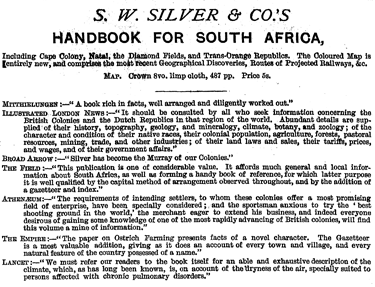
Colonies and India, October 23, 1880, London, United Kingdom
Colonies And India, November 14, 1888, London, Middlesex, United Kingdom
The hotels in South Africa are, for the most part, unsatisfactory. The attendance is bad, and the conveniences few. The number of patients going to South Africa is comparatively small, and quite inadequate to fill the various competing health resorts. It would be well if the patients could be all concentrated in one or two, and an enterprising hotel manager, willing to lay out capital in order to provide the necessary comforts, could be found.
At Grahamstown and King William's Town (called " King") the comforts and luxuries of life are as fully attainable as in any other part of the Colony, except the suburbs of Cape Town (which are too humid in winter), or in Kimberley. As regards the class of clerks, warehousemen, journeyman tailors, etc. it is difficult to promise employment. As to professional men whether architects, engineers, lawyers, doctors, or clergymen there is always scope everywhere for really able men. Those who have held their own in the midst of the competition of the Old Country are sure to make a position for themselves in a community where the number of really eminent men is necessarily limited.
Open-air occupations are at present few, but as the unhealthy mania for gambling in gold and diamond shares, which is the curse of South Africa, is replaced by patient plodding work on the land, the country will speedily change its aspect. A friend and patient of mine Mr. Irvine, of King William's Town showed what care and wise outlay could do in converting a desert into a model farm full of flourishing fields, plantations, gardens and thus setting an example which might be advantageously followed throughout a great extent of barren country.
Near Roode Sand Pass. Cape of Good Hope. Engraved by J. Bluck. Henry Salt.

Such efforts as these increase the value of South Africa as a health resort by reducing the excessive dryness of the air and soil, and by giving something for the eye gratefully to rest upon, and thus rendering those contented who, without anything of beauty to look at, would soon escape to more attractive lands.
New York Times, October 9, 1898, New York, New York, USA
The South African Muddle.
That a lesson was administered some fortnight ago in Berlin by Von Derenthall, the Under Secretary of the Foreign Office, to the Transvaal storm bird, Dr. Leyds, is now denied by the indignant Boer emissary. But it is none the less a fact that he received a severe snubbing, with a quick, stern warning not to stir up anti-English feeling in the German press.
President Kruger, Dr. Leyds and His Ministers of State. South Africa

The wounds of the unlucky doctor appear to heal so slowly that Von Billow himself, that courteous dispenser of the nastiest medicine in the sweetest form, has spoken a sting of pretty word,. though without repealing his subordinate's direct commands or minimizing his warning. Much allowance may be made for Leyds, who has been considerably outwitted at his own game. The cards were so heavily against him that he could scarcely have hoped to win the Delagoa Bay trick, but it is hard lines on him that his audience with the Kaiser should be announced on the same day as the practical concession of the bay, railways, and other rights, to England.

Nothing, as I have often said, could have stopped this happening, though a threatened war with Germany might have deferred It. This fact the Boers will not, or seemingly cannot, see, for they are adopting, reprisals in a form of commingling regulations, exacting service from the English settlers in the Transvaal, who in all other respects are being treated as aliens. The, to ease matters, Kruger is shaking hands ostentatiously across the border with the Orange Free State. The one chance is that the Kaiser may put things so plainly and bluntly before Leyds that he will rush back and stop the obstinate President from pushing matters to that extreme limit where even a conceding Tory Ministry has to fight or go.
Port Elizabeth
The Bristol Times and Mirror , April 3, 1897THE FREE STATE AND THE TRANSVAAL
Capetown, Wednesday

Petitions are being extensively signed in the Orange Free State against the agreement for closer union with the Transvaal, concluded at the recent conference at the Bloemfonteiu. Reuter.
The Mayor of Port Elizabeth has sent the following telegram to the Secretary of State for the Colonies:
"At a large enthusiastic public meeting last night, I was directed by unanimous vote to cable you the following resolution 'That the inhabitants of Port Elizabeth, in public meeting assembled, declare their confidence in the present Imperial Government, and urge the strict maintenance of the convention with the Transvaal, and further they sympathise entirely with the Uitlanders under the tyrannous and corrupt Government of Pretoria. They entirely repudiate Mr. Schreiner's suggestion of arbitration and his evidence as to British feeling in South Africa, and this meeting also declares that, according to the cable version of Mr. Schreiner's evidence, he does not represent loyal South Africans. Mayor"
Pretoria/Johannesburg
One of the Boers Sauntered In. With Roberts to Pretoria William Rainey |
Founded in 1855 and declared the capital of the South African Republic, which was the Boer republic in Transvaal. The president of the republic, Marthinus Pretorius, named it after his father, Andries Pretorius, who had become the national hero of the Voortrekkers after his victory over the Zulu kingdom in the famous battle at Blood River. The founding of Pretoria as the capital of the South African Republic marked the end of the Boers' settlement movements of the Groot Trek.
The largest gold resources in the world were found in the area of the Witwatersrand at the beginning of 1885, making South Africa one of the world leaders in gold mining. Johannesburg's other name, "Egoli" means City of Gold. The gold-bearing stone is mined at considerable depth. The Western Deep Level Mine, with its shafts of depths to 3900 m, is one of the deepest in the world. Because of this discovery, the University of the Witwatersrand was founded in Kimberley in 1896 as the "South African School of Mines."
The Boer War was the name given to the South African Wars of 1880-1 and 1899-1902 fought between the British and the descendants of the Dutch settlers (Boers) in Africa. After the first Boer War, William Gladstone granted the Boers self-government in the Transvaal. The Boers, under the leadership of Paul Kruger, resented the colonial policy of Joseph Chamberlain and Alfred Milner which they feared would deprive the Transvaal of its independence. After receiving military equipment from Germany, the Boers had a series of successes on the borders of Cape Colony and Natal between October 1899 and January 1900.
Although the Boers only had 88,000 soldiers, outstanding soldiers such as Louis Botha, and Jan Smuts led to successful defeat of British garrisons at Ladysmith, Mafeking and Kimberley.
Army reinforcements arrived in South Africa in 1900 and counter-offences relieved the garrisons and enabled the British to take control of the Boer capital, Pretoria, on June 5, 1900. For the next two years groups of Boer commandos raided isolated British units in South Africa. Lord Kitchener, the Chief of Staff in South Africa, reacted to this by destroying Boer farms and moving civilians into concentration camps.
The British action in South Africa was strongly opposed by many leading Liberal politicians and most of the Independent Labour Party as an example of the worst excesses of imperialism.
Native Workers Descending into a Diamond Mine near Johannesburg, South Africa. 1890s |
Waterloo Daily Courier , Waterloo, Iowa, March 21, 1896
THE SUPPLY OF GOLD
ENORMOUS INCREASE IN THE
PRODUCTIVENESS OF FOREIGN FIELDS.
A Deluge of Gold In Prospect--
The Output for 1895 Breaks All Records--
The Developments of Science Largely
Responsible For the Increase
It may be some consolation to Uncle Sam to reflect that although he has not a very firm grip on what little gold John Bull has left him, the supply is all the time increasing. If it were diminishing he might well look with alarm on every steamer that sails for Europe gold laden.
The gold famine, which a few years ago was confidently predicted, is now an improbability. A veritable deluge of gold is what is promised.
In 1895 the world's production of gold was the greatest since the mining of the yellow metal was begun. From the bowels of the earth was taken gold to the value of $203,000,000. In 1885 only $10,000,000 worth of gold was mined. Last year's production was greater than in the famous Comstock days and greater by a dozen times than that of any year down to the discovery of gold in California.
Rutherford Harris, who recently went to London to champion Cecil Ehodos' cause, says that the South African goldfields are already producing $40,000,000 in gold annually and that by the end of the century the development of the deep levels will increase this output to the enormous sum of $100,000,000 a year. This rate, he thinks, will bo maintained for 80 or 40 years after it is reached. He says the Transvaal will furnish in the near future nearly two-thirds of all the gold mined in the world. But perhaps he has reckoned without taking into account the wonderful developments of the Cripple Creek district, where the ground is said to be fairly reeking with gold.
It is not so much the discovery of new goldfields, however, to which this increased production is due as to the discoveries of science. By the new methods of mining which are now in use ore which would formerly have been thrown away as useless is now made to yield up its precious metal and is mined at a profit. Science has made the "crushings of the Rand" worth the crushing. In three sections of the world has there been a great increase in the output. The activity in the Colorado mines in 1894 put the United States at the head of the gold producing countries with a yearly output of nearly $41,000,000. In 1893, the United States produced $35,960,000 in gold.
Last year Australia held second place as a gold country because of the remarkable find of gold in the Coolgardie district. South Africa stood third in 1894, but next year will undoubtedly rank first.
The gold output of the Transvaal is all due to the fact that by the next processes of mining the low grade ores which these mines produce can be treated with profit. A forty-niner with his pick, shovel and cradle could not earn his salt in the Witwatersrand today. If he had struck such poor dirt in his early prospecting days in California, he would have turned from it in disgust. He would have had to shovel a ton of crushed rock into his sieve and when it was all washed out he would have found less than half an ounce of gold, or about $10 worth.

The South African miner of today requires a capital of many thousands of dollars before he can begin work at all. He must build big buildings, fitted with expensive machinery.
The ordinary method of gold mining which was in use up to a few years ago was to crush the ore to a fine powder and run this over amalgam plates of quicksilver. The gold was precipitated on the plates and afterward scraped off. But this means only about half the gold was saved. The rest went off in a kind of slime called "tailings."
Just here the cyanide process hegius. The "tailings" are gathered up and put in a great vat containing a weak solution of cyanide of potassium. This chemical has a peculiar affinity for gold and takes it up just as water does sugar. The gold laden liquid is then run through a filter made of zinc filings. This precipitates the gold, which is afterward washed off with clear water. Without cyanide the South African goldfields would be practically worthless.
But besides this improved process all supplies which are used by miners are much cheaper now than in the days when the gold fever was at its height in his country.
Giant powder, which used to sell at $1 a pound, is now delivered at the mines at 12 and 14 cents a pound. Other mining necessities are cheaper in a like proportion, so that mines which were once abandoned as having run out can now be worked.
The increase in the world's output of gold for the last five years has averaged 12 per cent for each year. If the rate of increase for the' next five years is only 10 per cent, still the total for 1900 will be the stupendous amount of $320,000, 000. With this great quantity of gold being poured out every year we may look forward to a deluge of gold. It is not an alarming prospect.
C. J. BOWDEN.
Bringing Ivory to the Wagons in South Africa |
Thomas Baines |
Saldanha
View of Table Bay Colonial School. Early 19th Century. Anonymous. |
In 1503, Antonio de Saldanha was forced by a storm into Table Bay. During his visit he traded an ox and two sheep from the local Khoikoi, but when De Saldanha went on land the second time, he was ambushed and wounded in his arm. The place would later be known as "Aguada de Saldanha" (the water collecting place of Saldanha) where two mountain streams flowed into the sea. He never visited the current Saldanha Bay, which has the best natural harbour on the African coast.
In 1601 a European Dutch explorer named Van Spilbergen sailed in; bit Saldanha’s potential as a deep sea harbour stayed dormant for a long time due to the lack of fresh water. By 1658 Free Burghers from the newly settled Cape Colony established themselves at Saldanha. The primary industries at that time were sealing, seabird egg collection, whaling, fishing and agriculture. Industrial development was based mainly on seal hunting until the 1840’s when large scale guano stripping began on Malgas Island and the other islands. A sizeable industry for the harvesting of penguin eggs also developed in the last quarter of the 19th century and whaling flourished for a while.
In the “African Pilot” of 1901 it was stated that ". . . Saldanha Bay, from its natural formation is admirably adopted for commercial purposes and for easy ingress of ships requiring to repair damages sustained at sea; indeed, it may be said to be the only safe harbour on this portion of the coast."
Following is a nautical chart of the Cape of Good Hope and Cape Town region of South Africa from 1752. This maritime map covers from False Bay past the Cape of Good Hope northwards past Cape Town and Isle Robben as far as Saldanha Bay. It includes depth soundings, and some inland topographic detail. The most detailed sounding focus on the seas around Isle Robben, which was a notorious prison at that time. Just south of the fort that would eventually evolve into Cape Town, Table Mountain is clearly rendered in profile. Engraved by De La Haye for Jean-Baptiste d'Apr s de Mannevillette’s 1775 Neptune Oriental.
(Note: The above is a rare map, generally unavailable.
It is here because of its historical value.
Please click on the map image for additional views and details.)
1899. World's Fleet. Boston Daily Globe
Lloyds Register of Shipping gives the entire fleet of the world as 28,180 steamers and sailing vessels, with a total tonnage of 27,673,628, of which 39 perent are British.
| Great Britain | 10,990 vessels, total tonnage of 10,792,714 |
| United States | 3,010 vessels, total tonnage of 2,405,887 |
| Norway | 2,528 vessels, tonnage of 1,604,230 |
| Germany | 1,676 vessels, with a tonnage of 2,453,334, in which are included her particularly large ships. |
| Sweden | 1,408 vessels with a tonnage of 643, 527 |
| Italy | 1,150 vessels |
| France | 1,182 vessels |
For Historical Comparison
Top 10 Maritime Nations Ranked by Value (2017)
| Country | # of Vessels | Gross Tonnage (m) |
Total Value (USDbn) |
|
|---|---|---|---|---|
| 1 | Greece | 4,453 | 206.47 | $88.0 |
| 2 | Japan | 4,317 | 150.26 | $79.8 |
| 3 | China | 4,938 | 159.71 | $71.7 |
| 4 | USA | 2,399 | 55.92 | $46.5 |
| 5 | Singapore | 2,662 | 64.03 | $41.7 |
| 6 | Norway | 1,668 | 39.68 | $41.1 |
| 7 | Germany | 2,923 | 81.17 | $30.3 |
| 8 | UK | 883 | 28.78 | $24.3 |
| 9 | Denmark | 1,040 | 36.17 | $23.4 |
| 10 | South Korea | 1,484 | 49.88 | $20.1 |
| Total | 26,767 | 87.21 | $466.9 | |
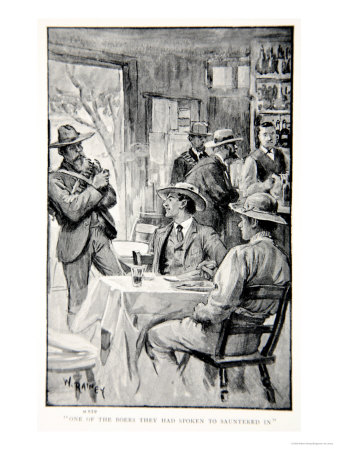

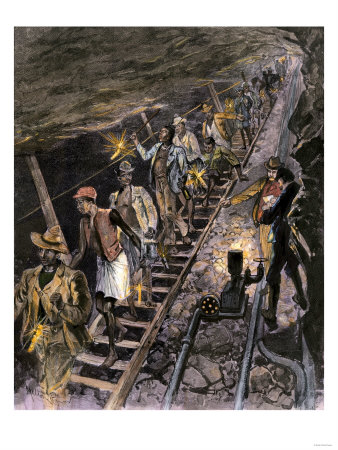

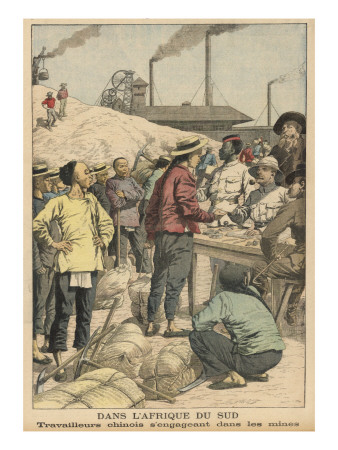
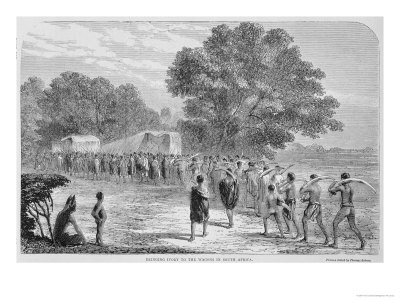

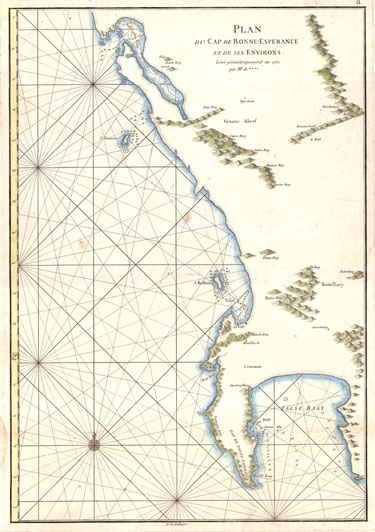


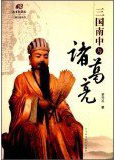 Three of South Africa and Zhuge Liang(Chinese Edition)
Three of South Africa and Zhuge Liang(Chinese Edition)
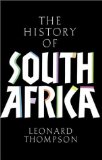

 Copyright ~ 1998-2018.
Copyright ~ 1998-2018. 